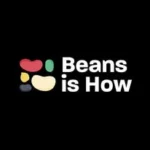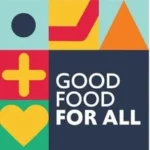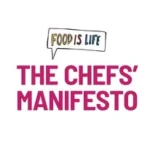Geeta Bandi-Phillips
Head of Global Advocacy at the United Nations World Food Programme (WFP)
Tell us in a few words about your organisation.
The United Nations World Food Programme (WFP) delivers food assistance in emergencies and works with communities to improve nutrition and build resilience, saving lives and changing lives. On any given day, WFP has 5,000 trucks, 20 ships and 92 planes on the move, delivering food and other assistance to those most in need. Every year, we distribute more than 15 billion rations at an estimated average cost per ration of US$ 0.31. These numbers lie at the roots of WFP’s unparalleled reputation as an emergency responder. Two-thirds of our work is in conflict-affected countries where people are three times more likely to be undernourished than those living in countries without conflict. Partnership is central to all that we do.
How is your work contributing to SDG2?
I have recently joined WFP as the Head of Global Advocacy in a newly set up team, and all my team’s advocacy efforts will help intensify progress towards ending hunger and achieving food security and improved nutrition by 2030. I always start by focusing on the daily lives of people I have met: all global goals are vital for people’s lives, all reinforce each other, and SDG2 has a direct link to most of the goals and significantly contributes to them. Nutritious food is a building block for every single person on this planet! In Somalia, where I worked for the past four years before joining WFP, I saw starkly what is at stake – survival, peace, opportunity, capability, and, vitally, dignity. In my work in the field, across continents, I’ve witnessed time and again the transformation that comes when people are no longer deprived of the food they need and the tremendous potential that is unleashed.
What is your best food memory?
My grandmother cooked meals for us in the village in south India where I lived with her as a child. She was a nurse, and she used to walk to all the villages she covered. She would come back home very tired but would always make delicious meals for dinner. I would sit next to her and watch while she was cooking and help in small ways, like cutting vegetables or bringing what she needed from the house as she cooked outside on an earthen stove. My favourite food memory is her bright, fiery red chilli pickle with savoury roselle leaves. When the pickle was made, she would also make hot rice, mix it with ghee and feed us. Heaven used to be close by in those days.
What else would you like to share with other Hub members?
The work of the Hub members to fight hunger is a cause that we have to win, that we can win, and that depends on people working together. While the international community has committed to ending hunger and achieving food security and improved nutrition by 2030, one in nine people worldwide still does not have enough to eat. People can’t eat a promise – what matters is that the promise is fulfilled, and that depends on a massive worldwide collective effort. Food lies at the heart of the struggle to break the cycle of hunger and poverty. The SDG2 Hub and its members have been at the forefront of this fight, and I am excited to be joining forces with you all as we work towards this common goal.

Fabrice DeClerck
Science Director with EAT and Scientist with Bioversity International
Tell us about your organisation.
EAT is a young organisation – 6 years old – and it recognises that food has an impact on the environment, human health, and equity and that making progress on those three goals requires actions by the private sector, by policy, and by science. Prior, no space was shared by those three domains to talk about and tackle the significant impacts that food has on health, sustainability and society. So, EAT created a space for those conversations, provided the science that sets the framework for that conversation, and helped influence the connection between the policy, private sector, and science sectors, making them more proactive and integrated in resolving these issues.
At EAT, I guide the organisation’s synthesis science while supporting knowledge translation. I have enjoyed being able to engage with all stakeholders by sharing our knowledge and expertise and also by listening to others – the private sector, cities, and civil society. We use these conversations to guide science and to be even more responsive and supportive towards the transition to healthier and more sustainable food systems.
Bioversity is one of the international research centres that make up the CGIAR and a unique organisation. When we talk biodiversity, people tend to think about wild nature, panda bears, and elephants – but biodiversity is intimately linked to our own well-being – the diversity of foods that are the foundation of healthy and tasty meals. While biodiversity underpins our own health and nutrition, it’s also the silent support system for food production – think of all the critters that pollinate our crops, decompose organic matter to make humus (and later hummus), or bacteria that live in the roots of beans and that are the secret to the protein richness of this plant family.
How does your work relate to SDG2?
My work focuses on what is truly a healthy diet, so what unpins SDG2 is the quantity and quality of foods that are the foundation of healthy diets. But I’m also interested in how SDG2 allows us to achieve other SDGs. We realize that shifting to eating healthier foods and producing those foods sustainably are ultimately needed to achieve many other SDGs, including climate, life on land, and life below water.
What is your best food memory?
I’m from Belgium, which many think is the land of chocolate, fries, beers, waffles – fantastic! But when I was in third grade in the United States as a young immigrant, my teacher asked us to come to school the next day with food that represented our culture. I was so excited! I returned home and happily asked my mom what I should bring. “I got the perfect thing,” she said, and she handed me… a jar of pickled herring. I went to school the next day, saying, “Here is the food representing my country.” Nobody touched it. What a missed opportunity…
What other messages would you like to share with SDG2 Advocacy Hub members?
Food is a topic that resonates with everyone – your mother, your daughter, your son – the president or prime minister of any, ok most, countries. Everyone has a food experience. Everyone understands the need for food and the enjoyment of food. Furthermore, food is so central to all the other SDGs. Today, it is not just enough to eat. Food needs to be looked at differently. We need to think about the right foods to eat, how to grow those foods, and, quite critically, how we ensure that farmers who toil so hard to produce healthy foods can enjoy profitable and enviable lives. Food underpins so many challenges but is a source of countless solutions. I love one comment Johan Rockstrom once made: Food is the number one source of environmental degradation. Food is the number one victim of that degradation, but food is the number one solution for restoration. I’m convinced that food is our best bet for resolving health and social equity.



